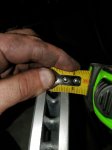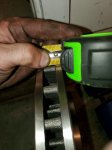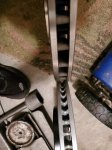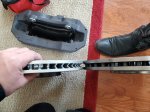Duane Black
Curbs go brrrppp
Ill open with what I've checked now at leas . I'm curious how much manufacturers let this vary from one to another.
First up is a 2 piston slider. the 13.25" rotor. This particular model is a r-300 raybestos, but its air gap is the same as my trusty Wagners. It measured approximately .5 inche

I bought some powerstop for the 14" Brembo kit and noticed right off thr air gap was huge. It was approximately 5/8 (.625) inches. I also noticed this and the 15" gt500 centric i bought were a variable vane desigb where my sliding caliper rotors always straight.


I trief the s550 setup with the 15 inch gt500 centric rotors but it didn't fit. I never measured, but noticed it seemed the air gap was thinner. That shocked me. Id estimate it at 3/8 (.375) inches.
The theory is, if its a wider gap, it should cool faster, no?
Are similar measurements seen across all manufacturers? Anyone else care to share any measurements?
First up is a 2 piston slider. the 13.25" rotor. This particular model is a r-300 raybestos, but its air gap is the same as my trusty Wagners. It measured approximately .5 inche

I bought some powerstop for the 14" Brembo kit and noticed right off thr air gap was huge. It was approximately 5/8 (.625) inches. I also noticed this and the 15" gt500 centric i bought were a variable vane desigb where my sliding caliper rotors always straight.


I trief the s550 setup with the 15 inch gt500 centric rotors but it didn't fit. I never measured, but noticed it seemed the air gap was thinner. That shocked me. Id estimate it at 3/8 (.375) inches.

The theory is, if its a wider gap, it should cool faster, no?
Are similar measurements seen across all manufacturers? Anyone else care to share any measurements?













